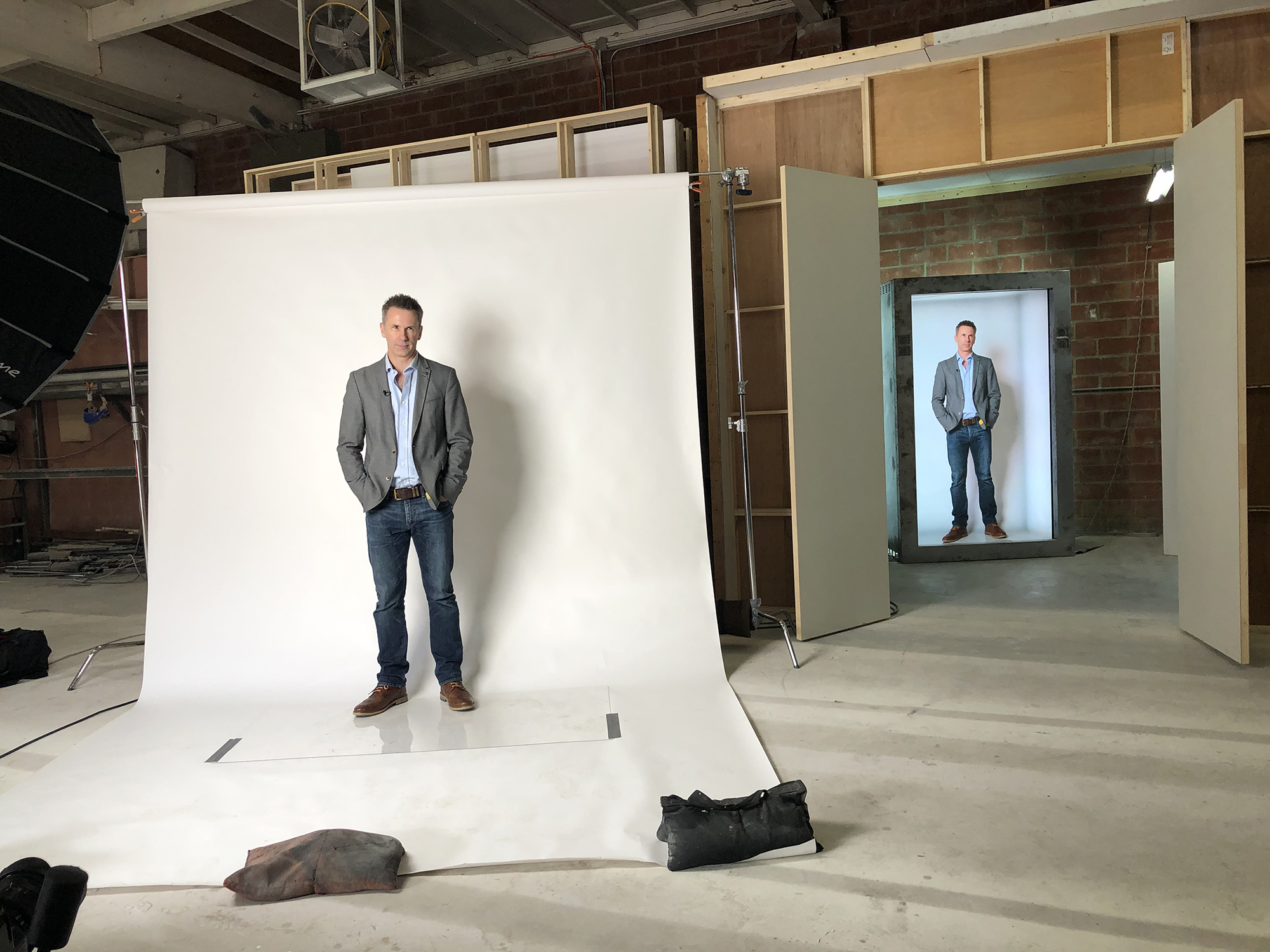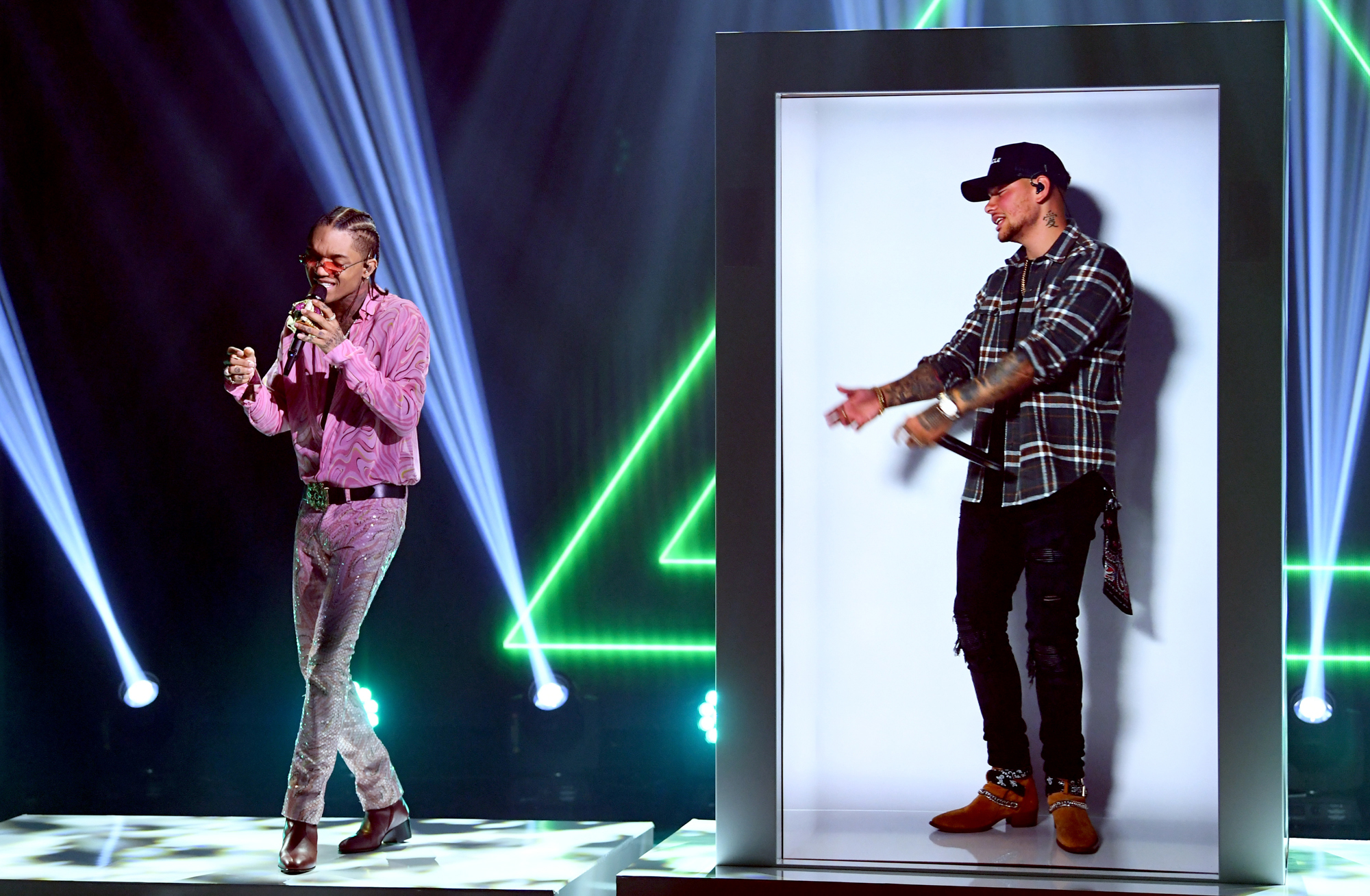David Nussbaum grew up wanting to be Howard Stern or David Letterman, one of the titans of the last, pre-internet age of mass communication. Now he wants to reinvent the way we beam people, public figures or otherwise, into living rooms all over the country. And he plans to do it using holograms and a fancy box that looks like a cross between a phone booth and a shower cubicle.
One day, he said, these are going to be in every home and office in America. Maybe even the world. He might be onto something, too. Welcome to the Next Big Thing.
“There are companies whose entire business model is, ‘we’re gonna bring dead people back and have them perform’,” Nussbaum told Digital Trends. “Buddy Holly. Whitney Houston. Frank Zappa. They’re all getting turned into holograms and performing. I went the opposite direction.”
The Tupac Hologram
Nussbaum is referring to the rise of the celebrity hologram. Long before Kanye West had the idea to gift wife Kim Kardashian West a hologram of her deceased father, the late entrepreneur and OJ Simpson attorney, Robert Kardashian, for her 40th birthday, there was Tupac Shakur and Coachella.
In April 2012, 15 years after the iconic rapper’s untimely death, Shakur was reanimated as the “Tupac Hologram” in order to appear on stage with Dr. Dre and Snoop Dogg in front of the festival’s 80,000-strong audience. In the days that followed, millions more — Nussbaum included — watched the performance online. Nussbaum was floored. While he was never the biggest hip-hop fan, he said he couldn’t wait to be first in line to buy tickets to the Tupac Shakur world tour. Only there was no follow-up.

“I waited for months, and it never happened,” he said. At the time, he was working for Greek billionaire Alki David. He helped convince his boss that it was a good idea to tackle the problem themselves. “So we reached out to the folks that owned the patents, and the company I was working for bought them,” he said. “We turned ourselves into the first hologram company that was going to exploit this in a real way; not just one-offs and special events, but actually scale this thing.”
Nussbaum, whose background is in the entertainment industry, loved the idea (and, presumably, the money-making potential) of giving audiences everywhere the chance to see all the artists they had never been able to see live. The result was Hologram USA, a company Nussbaum served for several years as vice president of sales for. During that time, Hologram USA touted its creation of holograms for the likes of the late Whitney Houston and Roy Orbison.
It also moved beyond the world of dead celebrities and into live ones: Helping “beam” the likes of Jimmy Kimmel from Hollywood to the Country Music Awards in Nashville, and WikiLeaks’ Julian Assange from the Ecuadorian embassy, where he was holed-up under political asylum, to a speaking gig in Nantucket, Massachusetts. Assange ended the on-stage interview by exchanging an awkward, ghostly high-five with his flesh-and-blood interviewer.
The Holoportation mission
Somewhere along the way, Nussbaum decided that this latter application of holograms was, perhaps, the more profound use case. Holographic music tours were one thing. But using the technology for telepresence, a holographic Zoom, had the potential to be so much more. (It also has the potential to be much less ethically and legally fraught. Hologram USA has faced an SEC complaint that it presents “false and misleading” information about its “exclusive” rights to use certain likenesses.)
“I said, enough of the big, giant stage shows,” Nussbaum said. “This was pre-pandemic, so it makes me look way smarter than I am. [I thought], is this something that can really last: Bringing dead people back? At some point, [people] are going to go, ‘okay, it’s not a novelty.’”

The PORTL Hologram Company is the result of that vision. The company’s flagship product is something called the Epic, a human-sized “holoportation” device that’s around 7 feet tall, 5 feet wide, and a couple of feet deep. Unlike the Tupac Hologram, which relied on a 19th-century illusion called Pepper’s ghost, the Epic relies on a different trick: Stretched transparent LCD screens with 4K resolution that are embedded into a lightbox to give the impression of 3D depth. In this sense, neither are honest-to-goodness holograms, which involves the creation of a 3D light field to make an image with depth and parallax.
The Epic has so far been deployed in a few settings. It made an appearance at last year’s ComicCon, and another at the Saturn Awards, a genre awards show that celebrates creations in the horror and fantasy realms. A couple of months ago, it stopped off at the Emmy Awards. (“Nobody was going to come out and [actually] walk the red carpet, but we were able to bring people on to the red carpet in their beautiful gowns,” Nussbaum said.)
Offices, malls, museums, and… churches?
The company’s website has no shortage of other suggestions for how the Epic could be deployed. Museums, for instance, could use it for hologram animals. Professors from around the world could be beamed into classrooms for lectures. Malls could use them for creating more lifelike mannequins. And how about a “Halo-Gram” event, in which a “spiritual leader hologram” could visit houses of worship “for holiday or special event sermons”?
There will be business use cases, too. “This is the way CEOs will be having their meetings, interviewing people and connecting with their customers quickly and inexpensively,” Nussbaum said. “Those long flight times, wear and tear — it will be a thing of the past. You can now make that very important personal emotional contact with people that you need to talk to without actually having to leave your office.”
So far, the company has shipped “several dozen” units, and is in the process of “manufacturing a couple of hundred.” These will be distributed before the end of the first quarter of 2021. There are pre-orders in excess of a thousand, Nussbaum says.
He said that the company is currently bringing in revenue from several sources: Selling the hardware, selling the software support via a subscription package, and from content creators wanting to hire PORTL to make hologram material for them.
Alongside the Epic, there’s a PORTL production studio kit, which provides the camera, lighting, audio, green screen, and other technology for recording or livestreaming the images. There’s also a PORTL mini device in the works so that users can have a scaled-down version of the Epic on their coffee tables. While there’s no timeline on making this publicly available, Nussbaum suggested there could be a monthly recurring cost of around $40, which would cover hardware and software support, alongside potential exclusive content.
“Look at what Peloton is doing,” he said. “You buy a $2,000 exercise bike, and then there’s an ongoing subscription if you want to use their exclusive interactive content. It’s the same kind of thing.”
The thin line between genius and insanity
Will PORTL work out as a business the way Nussbaum envisions it? That remains to be seen. The idea of going to a religious service that has the Dalai Lama trapped inside a box as though he was Hannibal Lecter does sound like something out of Black Mirror. But it’s also an idea that has a whole lot of potential.
“Will others follow and do this? I hope they do.”
The way we communicate is changing. Imagine telling someone even a couple of decades ago that, in 2020, we would carry out the majority of our business meetings and social life via a video call, while one of the most popular websites, YouTube, and most popular apps, TikTok, would be all about user-generated content.
Back in June, Digital Trends wrote about the fiftieth anniversary of Bell Labs and AT&T’s Picturephone system. It was a two-way videophone that promised to revolutionize the way we interacted with one another. It was considered a laughing stock. Nobody’s chuckling now. They’re too busy wishing they’d have had the foresight to patent the hell out of it.

The question of whether your average CEO will stand in front of a green screen to carry out remote job interviews is up for debate — as is whether offices will take up valuable floor space with a giant machine like the Epic. But full-body telepresence is a smart concept that, sooner or later, one company or another is going to pull off to great success and acclaim. It just remains to play out whether that company will be PORTL.
“Will others follow and do this? I hope they do,” Nussbaum said. “Because if I’m the only guy doing this then I still think it’s a bit of a novelty. When several other companies jump into the mix, all of a sudden my company becomes the leader of an industry. I fully welcome other, similar-style companies to help us define this industry and turn it into something.”






